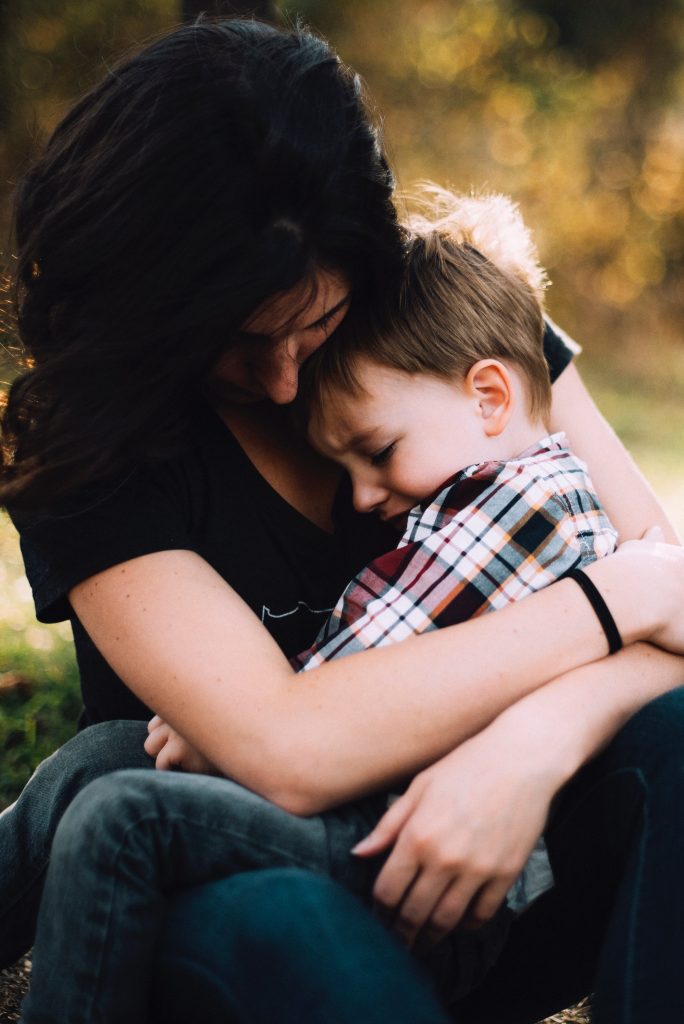Dr. Amber D. Gray, DBH
Children who witness abuse and violence experience various types of psychophysiologic consequences (Ali & McGarry, 2020; Bradbury-Jones, Morris, Sammut, Humphreys, 2020; Walker, 2013; Van Der Kolk, 2014). When it comes to children, it must be remembered that children have no choice of where they live or who their parents are. When there is violence in the home, children have a difficult time understanding all of the nuances of domestic violence. Parents may be distant from their children due to the violence and trauma they are experiencing (Ali & McGarry, 2020; Bradbury-Jones et al., 2020; Walker, 2013; Van Der Kolk, 2014). Children may internalize the negative behaviors of their parents, feeling they are responsible for the discord in their home.
The Affects of Domestic Violence on Children
The affects of the violence on children are often first seen by caretakers, like teachers, doctors, and those outside of the family system. Children may become aloof, their school work may decline, they may show indifference to one parent or the other, or both (Van Der Kolk, 2014). Their may be an element of coercive control and child abuse in the child’s home. Thus, a child may feel the need to keep quiet about the abuses that are occurring in the house for fear of retribution from the abusive parent (Ali & McGarry, 2020; Bradbury-Jones, Morris, Sammut, Humphreys, 2020; Walker, Van Der Kolk, 2014).
Children experience both physiological and mental health problems, after prolonged traumatic events (Van Der Kolk, 2014). Of children who experience traumatic events, 52% of them developed behavioral problems. Over a third of children, 39%, had difficulties adjusting at school. Two-thirds of children, 60%, felt that they were responsible or to blame for the violence in their home (Ali & McGarry, 2020; Bradbury-Jones, Morris, Sammut, Humphreys, 2020; Walker, 2013; Van Der Kolk, 2014). The frequency of violence also has negative effects on children.

Prevalence, Frequency, and Child Development
The more frequent the violence, the more likely a child is to normalize it. Children may even believe that violence is a way to resolve conflict (Ali & McGarry, 2020). Children do not have the intellectual sophistication to be able to understand the various dynamics of domestic violence. As a result, they internalize the negative experience. Children wonder why they caused their caregiver(s) to be in discord (Walker, 2013; Van Der Kolk, 2014).
Similarly, children witnessing violence in the United States is common and widespread (Gosselin, 2018). According to recent studies, approximately 15 children have been witness to violence (O’Donnell & Quarshie, 2019). This includes children seeing people get killed, shot, sexually assaulted, beaten up, threatened with a weapon, objects thrown at others, or physically accosted in some way (Gosselin, 2018). According to Gosselin (2018), when it comes to the overlap between violence against women and children, it falls somewhere between 30 and 60 percent.
The Legacy of Violence
Researchers have found that adults who are victims of violence, also witnessed violence in childhood. It is an ongoing and pervasive legacy in society. As providers, we must keep a few things in mind when it comes to our patients. Those who have had adverse childhood experiences or experienced domestic violence, will endure psychophysiologic issues. To understand these issues better, is to be a better provider, who produces less retraumatization outcomes. One provides better care, when they look at the entirety of their patient’s lives. Patient-centered care means better care for victims of violence.
